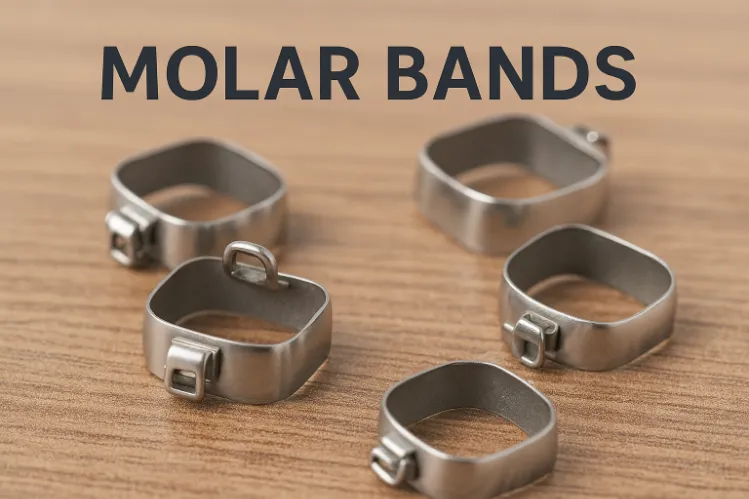
Table of Contents
Thinking about getting a teeth straightening treatment but confused between choosing at-home teeth straightening or going to the orthodontist? Each option has its advantages, but the final decision depends on your requirements, lifestyle, and budget. In this blog post, we’ll discuss these two teeth straightening methods so you can choose which course of action will help you have the smile of your dreams without the need for further adjustments. Let’s dig in!
Mail-order or at-home teeth aligners are clear plastic trays that have been specially designed to gradually move teeth to their correct position. The key benefit is convenience. One of the biggest advantages of at-home aligners is that the patient does not need to have multiple check-ups at the orthodontist’s office.
These aligners make use of your dental impressions or 3D scans of the teeth, which you can acquire in the comfort of your home. Once these impressions are sent back to the company, they formulate a treatment plan and simply deliver your aligners right to your front door. It is also suggested that you should wear the aligners for 20 to 22 hours daily and remove them only while eating or blasting.

Clear aligners worn at home are cheaper than normal braces and, hence, are economically a better choice for the masses. Nevertheless, they are deemed appropriate for mild to moderate alignment problems; therefore, they cannot really be useful when people have severe issues with dental malocclusions or have complex treatment cases.
Visiting an orthodontist for your teeth straightening simply means having your treatment supervised by a professional. Orthodontists have several options, including ordinary metal braces and the cosmetic invisible braces known as Invisalign. With such skills, they are in a better position to handle and treat various dental problems ranging from minor misalignment to extreme crowding.
The orthodontist will examine your teeth, take pictures, and develop a treatment plan for you. As opposed to clear aligners worn at home, you will have the orthodontist examine your case frequently and make some changes to achieve the best result. This oversight can be especially helpful if your dental problems are complicated and your case is complex.
Deciding whether to undergo dental treatment at home or visit an orthodontist’s office is not easy. However, the following guide can help you in decide which of the options suits you the best.

One of the most important factors in determining the right choice is the severity of dental misalignment. While it is safe to say that at-home aligner treatments are ideal for minimal to moderately complex cases, such as slight spacing or minor crowding. If you have serious crowding or if you are suffering from bite issues such as overbites, underbites, or any type of severe malocclusion, it is likely that the appliances need to be monitored by an orthodontist.
Since orthodontists have all the knowledge, skills, and equipment that is needed to treat such cases, they can handle severe cases better than clear aligners.
At-home aligners are known to deliver more relief in a relatively small amount of time for those suffering from mild dental problems. Due to the nature of these treatment programs to deal with simple misalignment problems, the average contact time could take between 6 to 12 months.
On the other hand, the treatments provided by the orthodontist may take more time but are more effective. It can take between 12 to 24 months or even more if you have serious dental problems using traditional braces, which are controlled by an orthodontist.
Therefore, if you want a fast and simple solution and your dental issues are moderate, at-home aligners are a good place to start. However, for those willing to embrace a more comprehensive experience, visits to an orthodontist offer lifetime guarantees.
Cost is inevitably a critical parameter for many individuals considering their orthodontic treatment. In general, at-home aligners are more cost-effective compared to in-office treatments. However, a majority of the at-home aligner manufacturers allow customers to apply for financing, which ultimately enhances the affordability of the price offered.
The cost of at-home aligners is overall somewhere between £1,500 and £2,500, depending on the provider. In contrast, the number of visits to the orthodontist usually costs a little more than the standard dental visits. The price for traditional braces provided in an office setting may range from £3,000 to £8,000 or more, depending on the treatment plan and the location.
But if budget restrictions are your biggest concern and your alignment issues are not quite complicated, at-home aligners are better. However, if you are ready to go the extra mile in getting treated by a specialist, an orthodontist might just be what your teeth need.
Read our detailed guide on Affordable Clear Aligner Options in the UK.

Lastly, deciding between at-home teeth straightening and orthodontist visits comes down to your specific needs and preferences. We are giving you a quick summary to help you make a decision that is best for you:
Clear aligners provide you with the flexibility of managing your treatment plan at home. Although you’ll be able to speak with customer support and maybe have digital check-ins, these firms won’t be able to physically view your dental condition as in the case of in-office treatments. However, this also means that, as a patient, you can monitor your treatment progress and discuss the treatment with the providers regularly.
On the other hand, orthodontists offer physical appointments that are more personalized and require in-person presence. There are several Invisalign teeth straightening options in the UK. During your regular check-ups, your orthodontist will be able to see how your teeth are responding and fix problems as they appear. If your teeth are not getting aligned as per the schedule, then they can adjust the treatment plan to ensure that everything goes as planned.
Such a level of supervision means that your treatment plan is personalized from the beginning to the end, which is more suitable for patients with complicated dental problems.
After you’ve completed your treatment, keeping your teeth in their new positions is just as important as getting them aligned in the first place. Here’s how post-treatment care differs between at-home aligners and orthodontist-supervised treatments.
Once you’re done with your aligners, most at-home companies will provide you with a retainer to wear. The importance of wearing this retainer as prescribed is to avoid having your teeth move back to their previous position. However, the effectiveness of this treatment depends on your consistency and compliance.
Moreover, in the case of at-home treatments, you will have to take additional responsibility for wearing your retainer as well as guaranteeing your outcome.
When your treatment is supervised by an orthodontist, post-treatment care is a bit more hands-on. Your orthodontist will suggest a custom retainer and may even schedule follow-up visits to ensure your teeth are staying in place. If anything seems off, they can adjust the retainer or offer additional guidance.
This ongoing support helps ensure that your teeth stay perfectly aligned for the long haul, giving you extra peace of mind after completing your treatment.
Therefore, when it comes to choosing between at-home teeth aligners and orthodontist visits, one has to make the decision based on the outcome they want and the recommendation from the dentist. For individuals who need a budget-friendly orthodontic treatment and are restricted by limited time, at-home aligners appear as the ideal solution for candidates with mild alignment problems. On the other hand, if your case is complicated or you would want to be supervised through the process, then an orthodontist is the best place to go.





Curated the best for your knowledge
.png) Metallic Taste in Mouth: Causes and How to Get Rid of It
Metallic Taste in Mouth: Causes and How to Get Rid of ItHaving metal taste in the mouth first thing in the morning can be an unexpected experience. You wake up, take a swallow, and suddenly have a metallic taste in your mouth, as if you'd been chewing on a handful of change. It's annoying, a little scary, and sometimes for no apparent reason. For some people, it will be nothing but a minor nuisance; others may fall into the late-night goose chaser. Sometimes it's a sign that there is something wrong with your braces; other times, it could mean that there is something wrong with one of your teeth. But here's the good news: Most metallic tastes are temporary, harmless, and can be treated or resolved. So let's take a closer look at the possibilities.
Read More How Molar Bands Work in Braces and Retainers to Keep Your Teeth in Line
How Molar Bands Work in Braces and Retainers to Keep Your Teeth in LineIf you’ve ever started orthodontic treatment, you already know there are a lot of tiny pieces involved. Wires, brackets, elastics, retainers, attachments… and then there are molar bands. They’re not as famous as braces themselves, but they play a surprisingly big role in keeping your smile moving in the right direction. Some people don’t really notice them. While others desperately want to know why that metal ring is even there. So let’s break it all down: what molar bands are, why orthodontists use them, and how they work in both braces and retainers. Plus, what you should expect throughout the process.
Read More.webp) Dental Bonding Cost: Prices, Process & What to Know
Dental Bonding Cost: Prices, Process & What to KnowIf you’re thinking about fixing a chipped tooth, closing a gap, or smoothing out uneven edges, dental bonding is often the easiest (and quickest) way to do it. And honestly? It’s one of the most budget-friendly cosmetic treatments out there, if you know what to expect. But here’s the part everyone worries about first: “How much does tooth bonding cost?” The short answer: it depends. The long answer: let’s break it all down so you actually understand where the price comes from, what you’re paying for, and whether bonding is the right fix for your smile.
Read MoreQuick Links

Heading